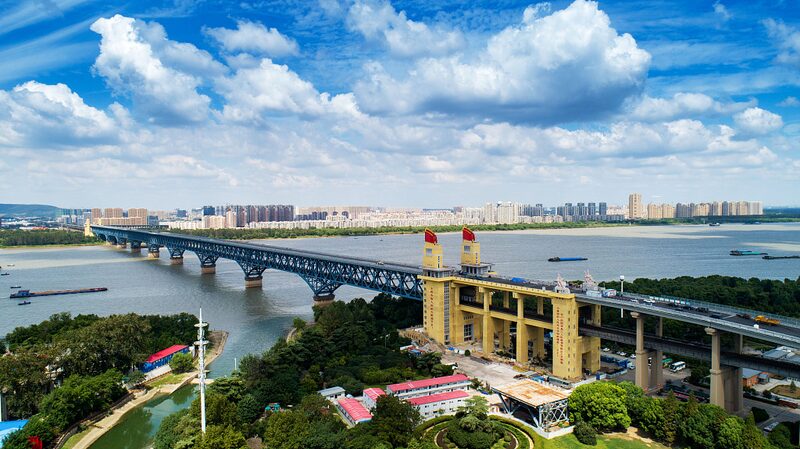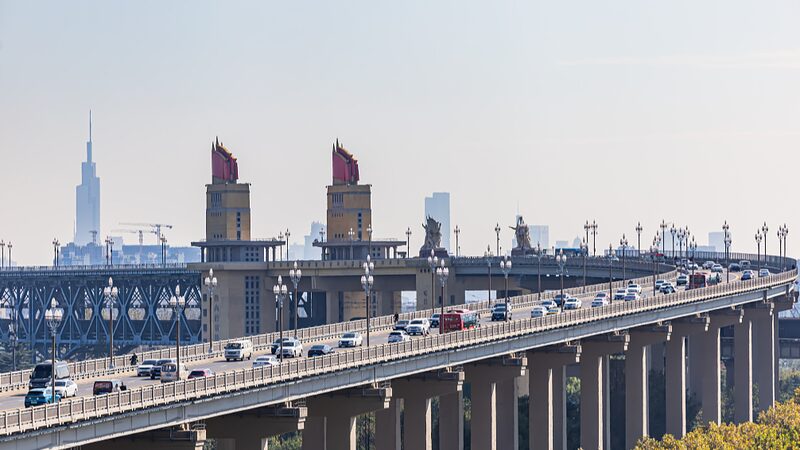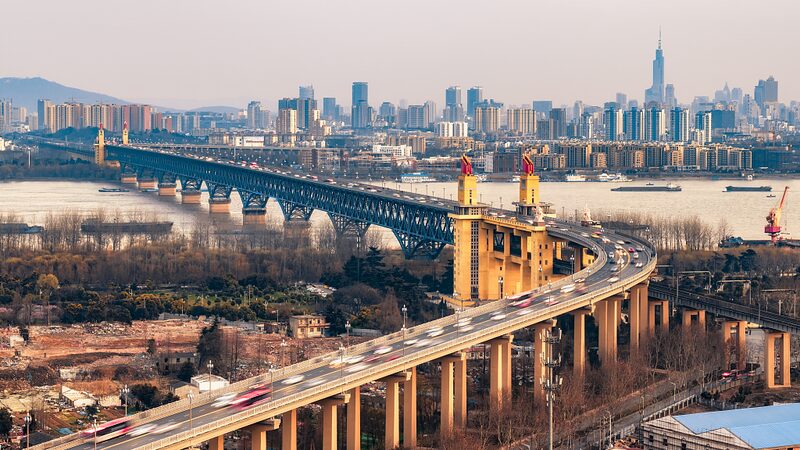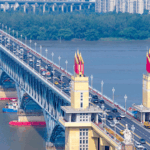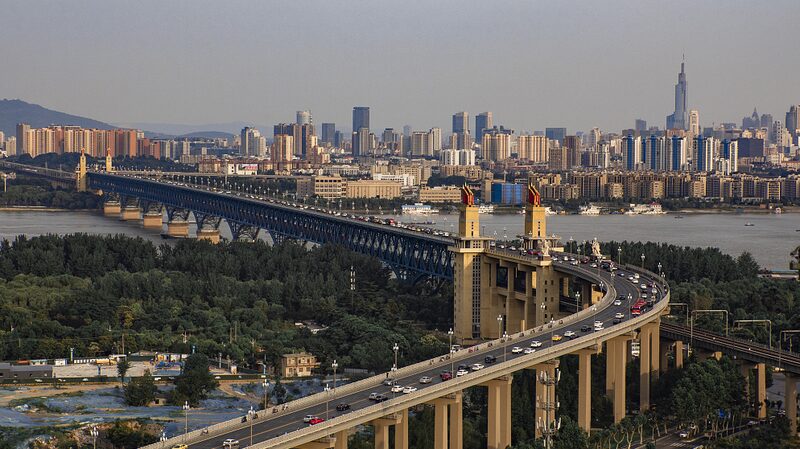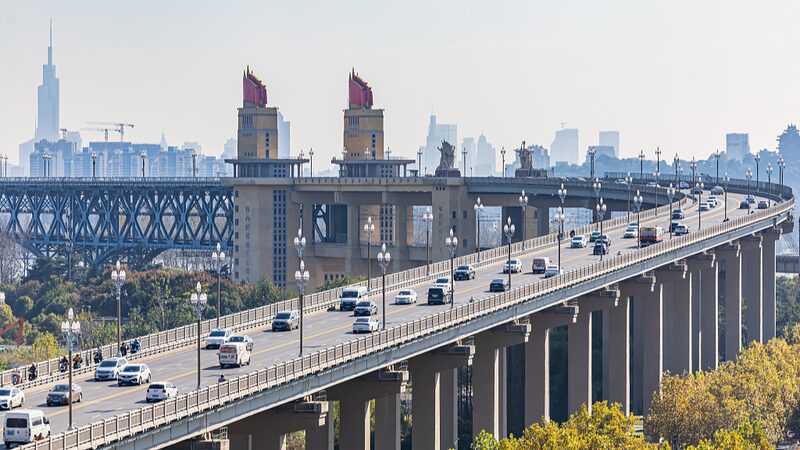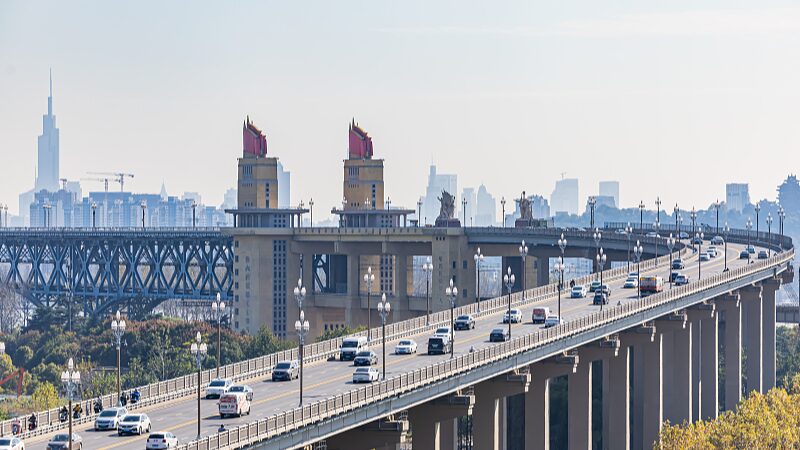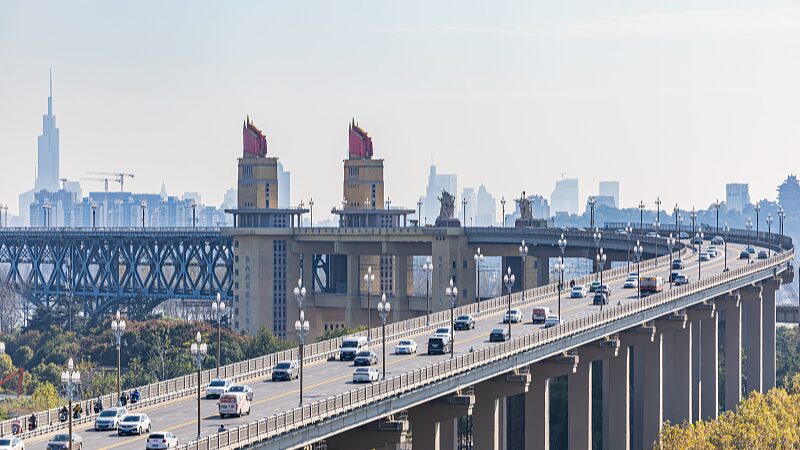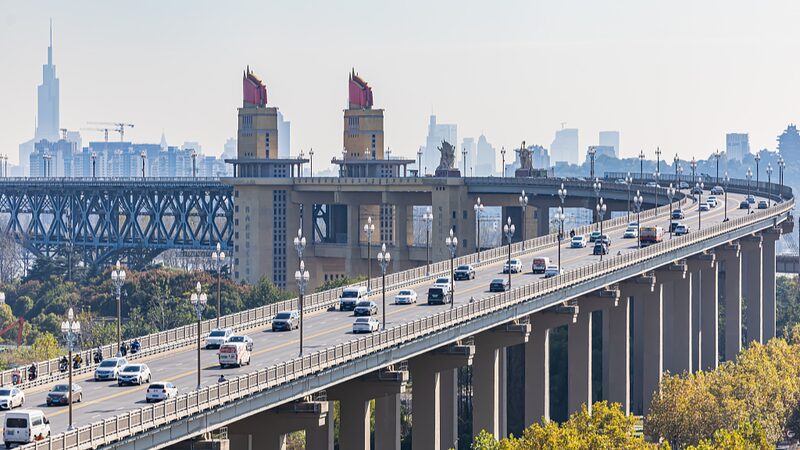Completed in 1968 in east China’s Jiangsu Province, the Nanjing Yangtze River Bridge stands as a testament to the nation’s innovation and determination. As the first double-decker road-rail bridge designed and built solely by China, it marked a significant milestone in the country’s bridge-building history.
The bridge spans the mighty Yangtze River, connecting the city of Nanjing and facilitating both road and rail transport across one of Asia’s most important waterways. Its completion not only enhanced regional connectivity but also showcased China’s burgeoning capabilities in large-scale infrastructure projects.
For travelers and cultural explorers, the Nanjing Yangtze River Bridge offers more than just a crossing point. The bridge itself has become a symbolic landmark, representing the industrial progress of the late 20th century. Visitors can enjoy panoramic views of the Yangtze River, observe the continuous flow of ships below, and appreciate the engineering feat that has withstood the test of time.
Business professionals and investors may recognize the bridge’s role in boosting economic development in the region. By improving transport efficiency, it has facilitated trade and commerce, contributing to the growth of industries along the Yangtze River Delta.
Academics and researchers find the bridge’s design and construction methods of interest, reflecting an important period in China’s technological advancement. The bridge’s enduring legacy continues to inspire new generations of engineers and planners in Asia and beyond.
As an iconic structure, the Nanjing Yangtze River Bridge embodies the spirit of progress and the dynamic role of China in global affairs. Whether viewed from afar or explored up close, it remains a remarkable achievement in the history of modern engineering.
Reference(s):
Live: A look at the view of Nanjing Yangtze River Bridge – Ep. 2
cgtn.com
